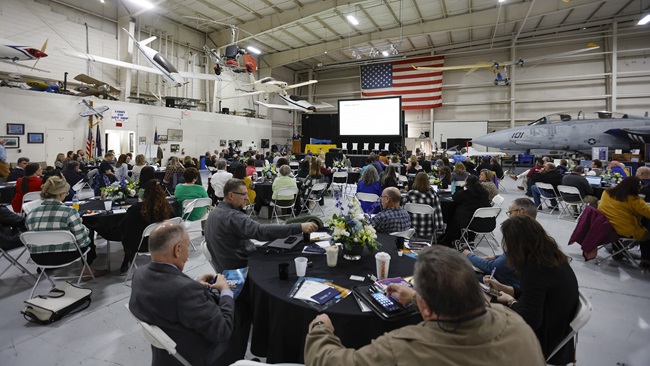Wisconsin students to build Glasair Sportsman
They were shown celebrating via video link as the announcement was made in Washington, D.C., May 13. This summer four students, a teacher, and a chaperone will travel to Glasair Aviation in Arlington, Washington, and spend two weeks building a two-seat Glasair Sportsman aircraft.
“They are about to have the experience of a lifetime,” said GAMA President and CEO Pete Bunce.
Build A Plane program Founder Lyn Freeman said, “When I explain exactly how kids participate in building a real airplane, the reaction by almost everyone is, 'Gee, I wish they had a program like this in my high school.’”
The competition’s design objectives were to make the airplanes “as fast and fuel efficient as possible,” GAMA Vice Chairman and Piper Aircraft President and CEO Simon Caldecott said on the video. Students used their knowledge of science, technology, engineering, and math (STEM) concepts to modify a virtual Cessna 172SP with software powered by X-Plane.
Seventy-six high schools were challenged with aerospace engineering concepts to squeeze the most efficient use of design and power from the Skyhawk. “The software scored the aircraft based on the payload, the length of the flight, and the amount of fuel burned,” according to a news release, and “judges from GAMA's engineering team evaluated a summary of modifications each team made” to the virtual aircraft.
Weyauwega students deployed several innovative techniques. Counter-rotating three-blade propellers increased horsepower on their aircraft and a computer-driven streamlined fuselage design minimized draft.
The team didn’t stop there, though. They pushed their mathematics skills to the limit and theorized that the modified Cessna could reach the virtual airport from 15 miles away if they “cut off the engine, feathered the props and glided at nearly 200 miles an hour” for the landing, Caldecott said.
The maximum permissible payload was 4,000 pounds, but the STEM team used additional number-crunching skills to determine that less weight meant better flight efficiency so they stretched every mile they could from their Fly to Learn classroom curriculum.
GAMA officials said that in addition to posting high essay grades, Weyauwega was one of two schools to score 1,100 points on the STEM project. Principal Jeremy Schroeder said the “opportunity and recognition will allow further real-world educational experiences” for the students as they transferred their classroom lectures to hands-on learning.
During the video Caldecott said the winning school impressed GAMA’s judges because they “applied what they learned in…every chapter of the STEM curriculum” to achieve one of the program’s highest scores.



